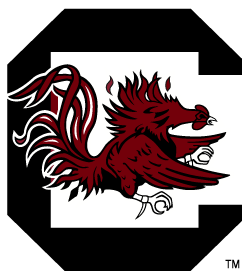Aug. 25, 2008
In 2007, the South Carolina volleyball program underwent a change, as Ben Somera took over the reigns as head coach and brought in a plethora of new faces to help bring the Gamecocks back into the top half of the Southeastern Conference.
It was mostly a transition year and a learning experience for a roster comprised in half by true freshmen. Somera explains it this way.
“A coach always has more confidence when he has a ton of returning players,” said Somera. “They know your expectations and your system. It becomes about just getting better and better each week. When you are a freshman, there are just so many new things. Not just how we play, but how we travel. It’s not like they get to acclimate when they get to school. They are starting their sport before they start their school. So that is a pretty difficult transition from high school.”
The transition took the team some time. After falling to 9-11, the squad fought back with its second league road win at Auburn and then proceeded to split weekends until the last two, getting swept on the road by NCAA Tournament participant Kentucky and 2005 NCAA Volleyball National Semifinalist Tennessee. After the dream of a .500 record slipped by, the young team bounced back to finish strong, winning its final two home matches, including an upset over NCAA Tourney-bound Alabama on the final day of the season.
Fast forward a year, and the 10th volleyball coach of the Carolina Gamecocks has an experienced group back while adding in a handful of new players to keep the gym environment competitive. No one person is completely secure in their job from last season, as players will be working to earn jobs at every spot in 2008. The first goal would be to end a five-year stretch of losing seasons. The last time the squad finished above .500 in 2002, they went to the NCAA Tournament, the obvious goal of every team in the nation. Coach Somera has other objectives in mind as well.
“I think we need to always be ready to play. We want to have good preparation the week before then come out and play our style of play and not let other teams dictate the tempo of our matches. Within the conference, we are becoming known as a team that plays very hard and with a lot of spirit. We always set some outcome goals, but I want us to be focused on the process of getting to those goals. It’s great to say you want to get to the NCAA Tournament, but how do you get there? Those are the goals that really matter. We want to play some better defense, play with the right intensity and understand our system. Those are things we have to do to get to those outcome goals.”
The team goes from no seniors to three this season, and all three will have the chance to play quality roles on the floor for this group. But they will also be leaned upon to provide leadership and guidance once again after growing in those roles in 2007.
And the schedule grew a little tougher for 2008, especially at the start. The squad travels to Tempe, Ariz., for the ASU Sheraton Classic, facing off against two NCAA Tournament teams in Dayton and UNLV and an ever-dangerous host in the Pac-10’s Sun Devils. The team also plays in the Ram Classic Invitational at the University of Rhode Island before coming home to host the Carolina Challenge, which will have four of the top teams in the state of South Carolina battling for bragging rights over Sept. 12-13. Two of those teams made the NCAA field a year ago, including Clemson and the College of Charleston. The meeting against the Tigers will be the 54th renewal of the rivalry that had no matches last season after playing every year since 1977.
From there, the Gamecocks enter SEC play, as the league continues the double round-robin schedule started in 2006. That means Carolina will play home-and-home with the 10 other league teams, including the five that made last year’s national championship field. Last season, five SEC teams finished with records above .500 in league play, and the NCAA Tournament Selection Committee chose all five for the field of 64.












